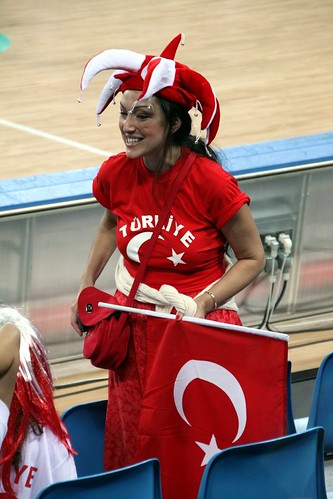
Turkey is one of only four countries that want to be associated with Eastern Europe (the other three are Belarus, Moldova, and Ukraine). While every other Eastern European country stubbornly resists the Eastern Europe label, Turkey embraces it. And yet, many Europeans don’t want to give Turkey the “honor” of being in Eastern Europe, because they believe that Turkey isn’t a part of Europe.
Geographically, Turkey has only a toe in Europe (see map below). About three percent of Turkey is in Eastern Europe; the rest is in Asia. Because of this lopsided ratio, it’s tempting to exclude Turkey from this book.
Still, just like eastern Germany is a legacy member of Eastern Europe, Turkey (due to the Turkish Empire’s dominance in the Balkans for five centuries) is also a legacy member. Moreover, modern Turkey is part of NATO, has strong ties to the Balkans, and is a serious EU candidate. In addition, while only a small part of Turkey lies in Europe, about 10 million Turks live in that part—that’s a bigger population than many European countries. Thus, we must consider Turkey.
Nevertheless, we’ll focus on Turkey’s western side—the part that’s most connected to Europe. I plan to analyze Turkey much more thoroughly in Book Four of the WanderLearn Series, which will cover the Middle East.
Before we take our short tour of Western Turkey, let’s consider the country’s name. Several Turks told me that they hate it when their country is called Turkey instead of Türkiye (sounds like Tur-ki-yea).
Of course, they wouldn’t have a problem with Turkey if the word didn’t have three unflattering meanings: a winged animal, a jerk, and a flop. If turkey meant awesome, then no Turk would complain.
Hungary faces a similar problem with its name. Hungarians call their country Magyarország. Like the Turks, Hungarians are tired of people cracking jokes about their country.
Ethiopia was disappointed with the World Cup draw. They were hoping to get Turkey, but got Hungary instead. — Bad joke

Francis Tapon is half Chilean and half French and he was born and raised in San Francisco, California. He’s been to over 80 countries, but he keeps coming back to this magical city because he loves earthquakes.
He spoke Spanish at home, French at school, and English everywhere else. He can get by in Portuguese and Italian, barely survive in Russian and Slovenian, and speak a few other languages.
Francis has an MBA from Harvard Business School and co-founded a successful Silicon Valley company that did robotic vision. He left his technology life to walk across America four times. He has thru-hiked the Appalachian Trail and the Pacific Crest Trail, and in 2007, became the first to do a round-trip on the Continental Divide Trail. In 2009, he was one of the finalists for the California Outdoors Hall of Fame, which “features nominees who are world-renowned for their skills and who have helped inspire thousands of others to take part in the great outdoors.”
Francis has written a couple of travel books including The Hidden Europe: What Eastern Europeans Can Teach Us and Hike Your Own Hike: 7 Life Lessons from Backpacking Across America. He also produced a 77-minute video about his CDT Yo-Yo.








